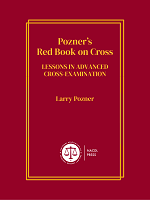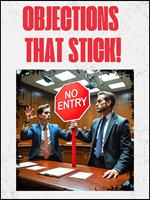By Cynthia Hujar Orr, President, National Association of Criminal Defense Lawyers
Washington, DC (July 2, 2010) – Death penalty reform in the United States seems to take one step back and two steps forward. Sadly, June 18 saw the barbaric execution of Ronnie Lee Gardner by a Utah firing squad. That same week, however, Troy Anthony Davis finally got an evidentiary hearing in federal court that he hopes will finally establish his innocence after 20 years on Georgia’s death row. And the U.S. Court of Appeals for the 11th Circuit ruled June 30 that Georgia’s law requiring mentally retarded death penalty defendants prove their disability beyond a reasonable doubt violates the Eighth Amendment’s ban on cruel and unusual punishment. The struggle continues.
As President of the National Association of Criminal Defense Lawyers, I want to tell you of several more important capital case developments last month that may not have made headlines recently, but should be important to everyone with an interest in death penalty defense.
The first is a tragic case that did make headlines four years ago. In United States v. Williams, No. 07-20689, decided June 24, the U.S. Court of Appeals for the Fifth Circuit sensibly circumscribed the “act of violence” element in the Federal Death Penalty Act, 18 U.S.C. §3591(a)(2)(D) (“FDPA”). In so doing, the court found that there was insufficient evidence to support the defendant’s jury-imposed sentence of life without parole and remanded to the district court for resentencing under the federal sentencing guidelines. The Fifth Circuit hears appeals, direct and on habeas corpus, out of Texas, the state that leads the nation in executions. It follows that the Fifth Circuit affirms a lot of death sentences.
Commercial truck driver Tyrone Williams contracted with an alien smuggling operation to transport 74 undocumented aliens in his airtight trailer from Harlingen, TX, to Robstown, TX, a trip that was supposed to take only an hour and a half. The drop did not happen as planned, and Williams was instructed by cell phone to drive on. When he ended the trip several hours later in Victoria, 17 of Williams’ passengers were dead. Two more later died at the hospital from a combination of dehydration, hyperthermia and suffocation. Two of the victims were children.
Williams was tried on 39 counts arising out of that grisly trip, 20 of which were capital charges. Following the district court’s instructions, the jury found that Williams had committed the requisite act of violence under §3591(a)(2)(D), but it rejected the death penalty and sentenced him to life imprisonment without parole.
A federal death penalty sentencing has two phases – an “eligibility” phase and a “selection” phase. The jury must first find beyond a reasonable doubt whether the defendant had the requisite intent to make him eligible for the death penalty. Section 3591(a)(2) provides for four requisite threshold intents: the defendant (A) intentionally killed the victim; (B) intentionally inflicted serious bodily injury resulting in death; (C) intentionally participated in an act in which the life of a person would be taken or intending that lethal force would be used, and the victim died as a direct result of the act; and (D) intentionally, specifically and knowingly engaged in an act of violence constituting a reckless disregard for human life, and the victim died as a result of it.
The facts adduced at trial indicated that the smugglers helped the victims into the semi-rig’s trailer while Williams sat in the rig’s cab, and that Williams had no contact with them until their arrival in Victoria, Tex., by which time 17 of them were already dead. The judge’s proposed jury instruction tracked the language of the statute. In addition, he proposed additional language, to which the government objected:
An act of violence is any act that involves the use, attempted use, or threatened use of physical force against the person of another, creating a grave risk of serious injury to a person . . . or a grave risk of death to that person.
That instruction was not given.
Earlier this year, in Johnson v. United States, the Supreme Court had occasion to ponder the ordinary meaning of the word “violent” in determining whether a misdemeanor battery under Florida law could be a “violent felony” for purposes of the federal Armed Career Criminal Act (NACDL filed an amicus curiae brief in that case). The Johnson Court’s discussion, which included definitions of “violent” from Webster’s, Black’s and the Oxford English dictionaries indicated that “physical force is an indispensable aspect of the word ‘violent,’” according the Williams decision.
Despite the horrible facts of the case, the Fifth Circuit found that no rational juror, properly instructed, could have found that Williams engaged in the requisite act of violence – the threshold intent discussed above. There was no evidence that Williams ever exerted any physical force against his hapless passengers, the court said. “The evidence presented at trial was clear that the aliens were loaded by others … while Williams remained in the cab of his truck. Merely driving the tractor-trailer does not constitute the use of physical force in the relevant sense.”
“Williams’s [sic] conduct during the smuggling trip, despicable as it was, fell short of the statutory minimum to subject Williams to the possibility of a death sentence,” the court said, and remanded his case for resentencing by the district judge.
Habeas Corpus—Equitable Tolling
Sometimes people face the death chamber because their lawyer was incompetent or incapacitated in some way. Sadly, the bad lawyer might get the case at any level—trial, appeal or collateral attack.
In Holland v. Florida, No. 09-5327, the U.S. Supreme Court ruled on June 14, 2010, that the one year limitation period for the filing of a federal habeas corpus petition under the Antiterrorism and Effective Death Penalty Act of 1996 (AEDPA), 28 U.S.C. § 2244(d) is subject to equitable tolling “in appropriate cases.” The Court found that AEDPA 1-year limit is (i) not jurisdictional, (ii) of the nature of an ordinary, run-of-the-mill statute of limitations, and (iii) is not undermined by equitable tolling, so far as its purpose of eliminating delays in the federal habeas review process is concerned. Until this decision, the Supreme Court had “not decided whether AEDPA’s statutory limitations period may be tolled for equitable reasons.”
In this case, after his conviction and death sentence for first-degree murder were final in the state courts, Albert Holland filed a pro se petition in the Southern District of Florida, but it was five weeks after the one-year AEDPA deadline. Holland sought to have the court toll the limitations period for equitable reasons. The Court explained that it has made clear that a petitioner is entitled to equitable tolling only upon a showing “(1) that he has been pursuing his rights diligently, and (2) that some extraordinary circumstance stood in his way and prevented timely filing.” The extraordinary circumstances in this case involved “an attorney’s failure to satisfy professional standards of care.”
The Court proceeded to reject as “too rigid” the position of the Eleventh Circuit court of appeals that a petitioner can only excuse a late filing under AEDPA on the basis of his attorney’s unprofessional conduct with “proof of bad faith, dishonesty, divided loyalty, mental impairment or so forth.” Instead, emphasizing the importance of a court exercising its equity powers on a case-by-case basis, as well as the need for “flexibility” and the avoidance of mechanical rules, the Court said that this was not “a garden variety claim” of attorney negligence or excusable neglect, but rather a far more serious instance of attorney misconduct.
According to the record before the Court, Holland’s court-appointed attorney,
Failed to file Holland’s federal petition on time despite Holland’s many letters that repeatedly emphasized the importance of his doing so. Collins apparently did not do the research necessary to find out the proper filing date, despite Holland’s letters that went so far as to identify the applicable legal rules. Collins failed to inform Holland in a timely manner about the crucial fact that the Florida Supreme Court had decided his case, again despite Holland’s many pleas for that information. And Collins failed to communicate with his client over a period of years, despite various pleas from Holland that Collins respond to his letters.
“More proceedings may be necessary,” the Court said in remanding, and sent the case back to the court of appeals “to determine whether the facts in this record entitle Holland to equitable tolling, or whether further proceedings, including an evidentiary hearing, might indicate that respondent should prevail.”
This decision marks a victory for justice and fairness and will serve as a reminder to courts everywhere to consider the equities in a case.
Resentencing Challenge Not ‘Second or Successive’
In another AEDPA-related case arising out of the Eleventh Circuit, Magwood v. Patterson, No. 09-158, the Supreme Court held on June 24, 2010, that a federal habeas application is not a “second or successive habeas corpus application” foreclosing a collateral attack on a judgment, where the petitioner is challenging a new judgment in the same case. Billy Joe Magwood successfully challenged his death sentence in an earlier habeas proceeding. After a new sentencing in which he again received the death penalty and affirmance in the Alabama supreme court, he again petitioned for a writ of habeas corpus, arguing that he did not have fair warning at the time of his offense that his conduct would permit a death sentence under state law. A six-member majority of the Court, in an opinion by drawn Justice Clarence Thomas, held Magwood’s new habeas petition was not disallowed as a “second or successive” application, because his resentencing was a new judgment for the purposes of AEDPA’s rules governing “second or successive” federal habeas challenges.
I myself have been working on three capital cases, and I know the exhaustion and stress firsthand. As a death penalty lawyer, I am proud that NACDL is invested 100 percent in death penalty reform—through litigation, training and lobbying in the state houses, the Congress and the United Nations. We are partners in the struggle against capital punishment, and together we shall prevail.
Contacts
NACDL Communications Department
The National Association of Criminal Defense Lawyers is the preeminent organization advancing the mission of the criminal defense bar to ensure justice and due process for persons accused of crime or wrongdoing. A professional bar association founded in 1958, NACDL's many thousands of direct members in 28 countries – and 90 state, provincial and local affiliate organizations totaling up to 40,000 attorneys – include private criminal defense lawyers, public defenders, military defense counsel, law professors and judges committed to preserving fairness and promoting a rational and humane criminal legal system.













